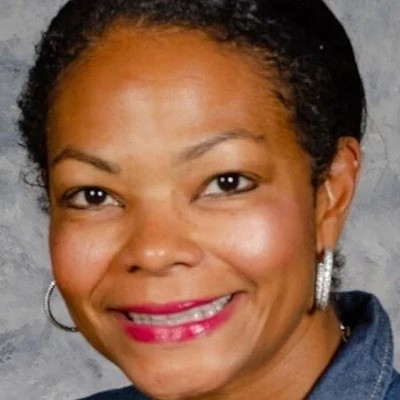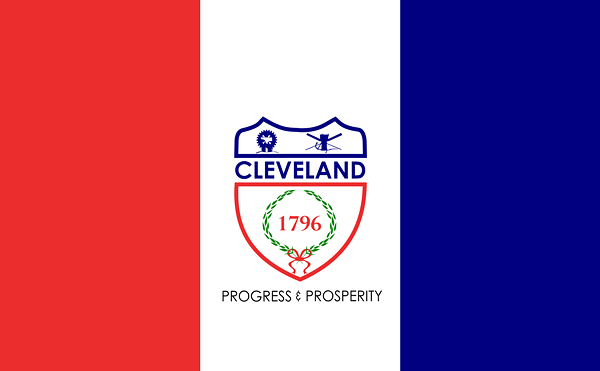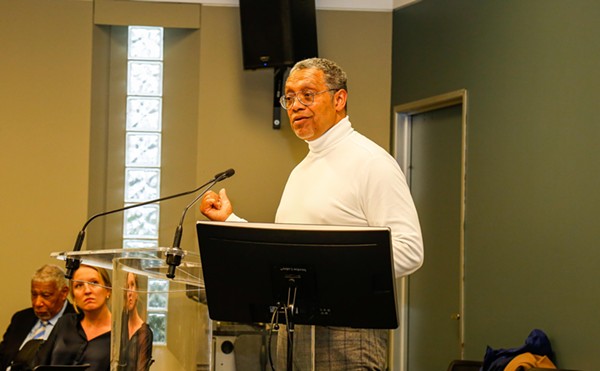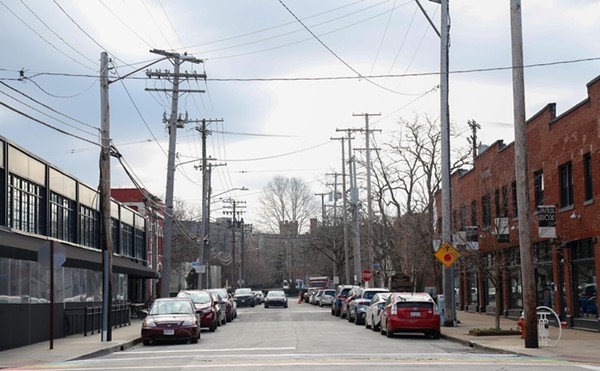Late one recent Sunday night, DJs ESO and Corey Grand fill the subterranean expanse of the B-Side Liquor Lounge and Arcade with a barrage of eclectic tracks. Deep bass lines roar beneath colorful synths and chopped-up vocals while kick drums and snappy, old school snares tap along. Tracks blend in and out of one another, seamlessly creating a collage of what was and is utterly hip.
"This is the most versatile night of music in Cleveland," Grand hollers, and he's not wrong. The mix of club, trap, electronic and hip-hop doesn't discriminate much, if at all.
By 1 a.m., the crowd of about 40 is in full swing — grabbing drinks, mingling about and hitting the dance floor. Burgertime, Galaga and assorted retro arcade screens blink on the outskirts of the room alongside party lights.
The evening's lineup also features a special DJ set by Freeze-Tag, a 24-year-old local electronic performer. His tracks, like "You Do" and "Hours (Ours)," groove alongside those of national and international artists. Freeze-Tag is amongst the handful of Cleveland electronic musicians attempting to develop a presence in the city, which hasn't always been easy.
Electronic Dance Music ("EDM" in the scene's colloquy) has found its way to Top-40 status. What was underground was mainstreamed and now emanates from your favorite local FM stations and takes center stage at the Grammys. The local underground, meanwhile, never went away and remains the same tight-knit, supportive group that helped birth Girl Talk over a decade ago.
Girl Talk, who moved to Cleveland from Pittsburgh in 2000 to study biomedical engineering at Case Western Reserve University, isn't the typical Northeast Ohio electronic artist story. While Girl Talk counts some 400,000 listeners and over 23 million plays on lastfm.com, not to mention untold downloads of his last solo EP, All Day (which was free, and is probably on your iTunes playlist), he would have been lucky to draw 100 people at his early shows.
That was the era, in the late '90s and early '00s, when Prodigy, Fatboy Slim and the Chemical Brothers landed in heavy, regular rotation on MTV. The electronic underground was a fringe sect in Cleveland, which had its pluses and minuses. It was a small group, to be sure, and it lacked a scope and reach, which is something it still deals with to this day. But it did give artists the chance to support each other, open for national acts like Kid606, ADULT. and Cex, and experiment wildly.
"There was a time around 2000 when you could go to Speak in Tongues, or a venue like that, and see some raw shit," says Gregg Gillis, aka Girl Talk. "You'd see some crazy stuff that was only in the context of 'right now.' Meaning: It's not going to be on the Internet and people aren't doing this to get a viral video. It was a bit more of a free-for-all vibe. Again, I don't think it's the way it should be, but it was cool while it lasted."
Since then, the scene has changed along with the landscape of electronic music at large — from the success of ubiquitous chart-toppers like Skrillex and Krewella to the avenues by which artists distribute their creations — and Cleveland is reinventing itself and birthing talent like never before. The problem, as always, is attracting an audience.
"I think we've got the momentum, for sure, but I think it needs to be a holistic change," says Marcus Alan Ward, aka Freeze-Tag. "We have the talent and the artistry portion of it, but..."
Better Living Through Circuitry
In the late '90s, Cleveland was caught up in the rave trend like everyone else in the world. Glow sticks, whistles, flashing lights and a straight four-on-the-floor bass-drum-thumping were the norm. The common perception that the scene was intimately associated with drugs and other illegal activities wasn't out of place and those ties created a whole ancillary level of cops and secrecy that distracted from the music.
"This period, maybe between '96 and '00 or so, I'd have gigs up in Cleveland," says Columbus-bred musician RJ Krohn, more commonly known as RJD2. "So, I would drive up there fairly often. It seemed to me that there was this pseudo-rave type of world that was happening and I would kind of be an odd man out. I would wind up driving up to Cleveland for a weekend and having gigs in warehouses or large, banquet-hall type of events. There was a window in time that this was happening in that part of Ohio and it seemed to go away around 2000."
As the rave world waned, other genres like drum 'n' bass, techno and more experimental forms had room to come to the forefront. Venues like Speak in Tongues, the Grog Shop and smaller pop-up venues aided in the birth of the new era that drew national acts to Cleveland and gave local artists the chance to open for them.
"We dabbled at [bringing in national acts] in the beginning and by 2004 really started doing it," says B-Side's Brad Petty, aka MisterBradleyP, about Cleveland-area shows. "It was 90 percent national acts, mostly DJs. In terms of live acts, the live acts were always up here [at the Grog Shop], like Daedalus, Prefuse 73, and Gaslamp Killer — the whole L.A. scene."
With such a small and intimately connected cluster of local artists, everyone benefited. Exposure and good old friendly encouragement went a long way.
"If you can have that particular interest, especially in the early 2000s, if you're into weird electronic music, there was only a small group of people involved in that," Gillis says. "So it was easy to be a part of the scene and get on shows and actually open up for national acts. When you take that step, it's kind of exciting because there are only so many people involved in bringing those national electronic acts in town. So, it was not that difficult to get on bills with some of my favorite musicians, people I really looked up to. So, I think that was the most immediate advantage. I think in a city the size of Cleveland, people are down to help each other out."
EDM vs. Electronica
Last year's top-selling records included electronic albums like Daft Punk's Random Access Memories, Avicii's True and Calvin Harris' 18 Months. Electronic is not only an element of pop music but on equal footing with rock 'n' roll and hip-hop in terms of sales and concert attendance. To wit: Daft Punk took home five Grammys last year, including Album of the Year.
But there still exists a barrier between the music and its audience thanks to certain (technical and supremely frustrating at times) definitions within the genre. The staggering difference between EDM and other electronic music often presents itself as the first hurdle. EDM might be one of the most well known subcategories, but it represents only a fraction of the scene.
For the beginners: Created primary for clubs, EDM in its purest sense is dance music. Whether it takes on the moniker of "electro house," "dubstep" or even "big beat," these dance tracks were created with the clear intent of getting people to dance.
Then there's the other side of electronic music — a nearly genre-less island of artists combining thousands of influences to make "electronica." In this light, the Grammys title of "Dance/Electronica" becomes strangely concise. There is EDM, and then there's everything else. Those making the "everything else" music live in the perpetual shadow of EDM but relish their niche.
"When this whole EDM craze hit, it sort of divided things between the underground. And now EDM is Top 40," says MisterBradleyP. "It's on 96.5 FM. Sorority girls were going to see Passion Pit; now they're going to festivals and dancing to DJs. So, the underground scene didn't necessarily blow up because of the EDM thing. It's still organic and growing. And I think that people who have grown up with electronic music are now looking for that underground stuff again because that other scene got so big and mainstream. They don't want Top 40; they want the underground stuff. Things like disco and the whole glitch-hop stuff are coming back because of it."
Relatively well-known artists like Flying Lotus, Boards of Canada and Autechre are gaining in popularity and the non-dance-oriented movement has accelerated with the masses over the past decade. While it's wreaking havoc on those wishing to succinctly describe the music they create, the anti-genre electronica genre has wormed its way into the local audioscape and influenced a host of Cleveland musicians like Freeze-Tag and Urbindex.











